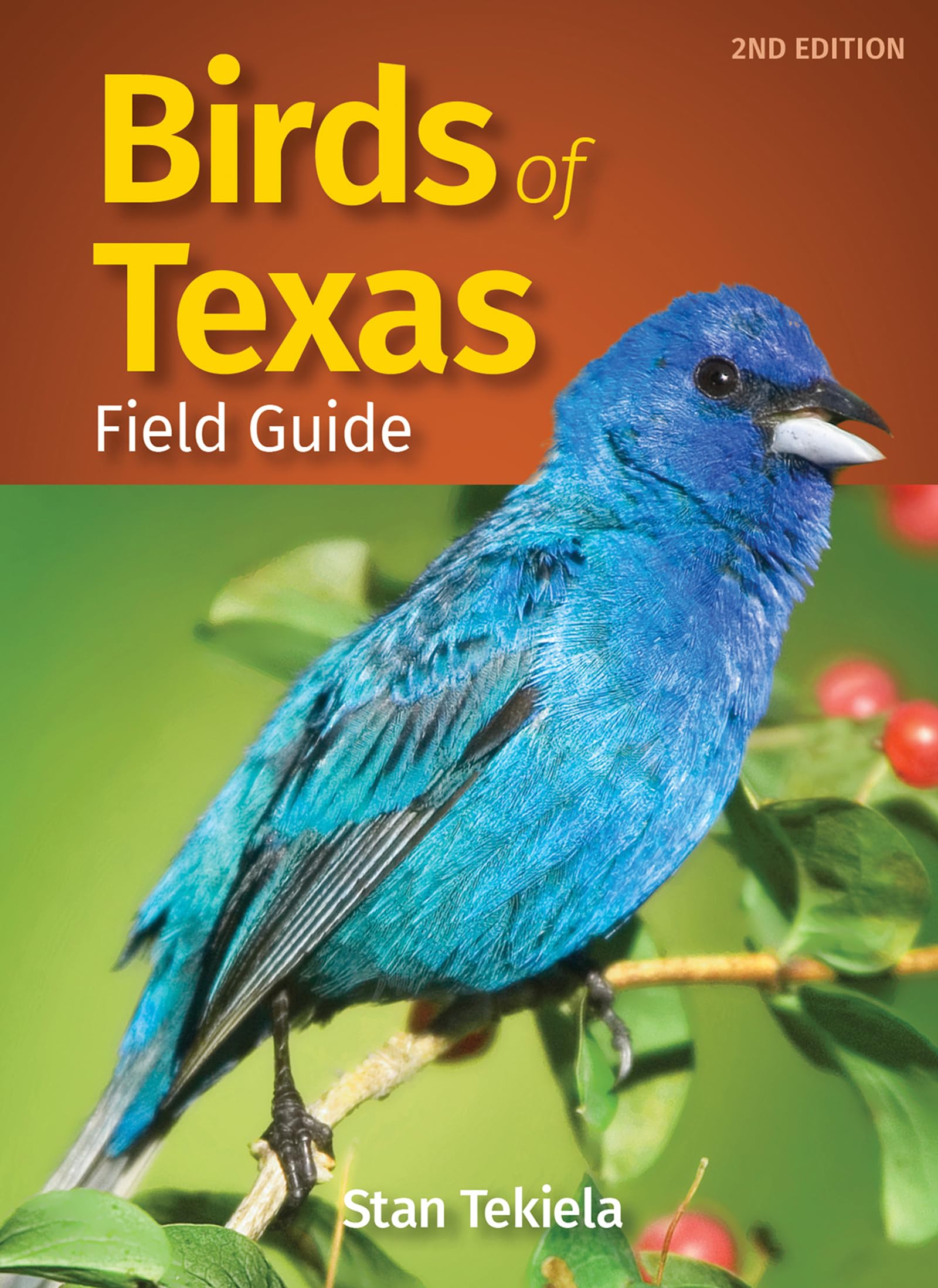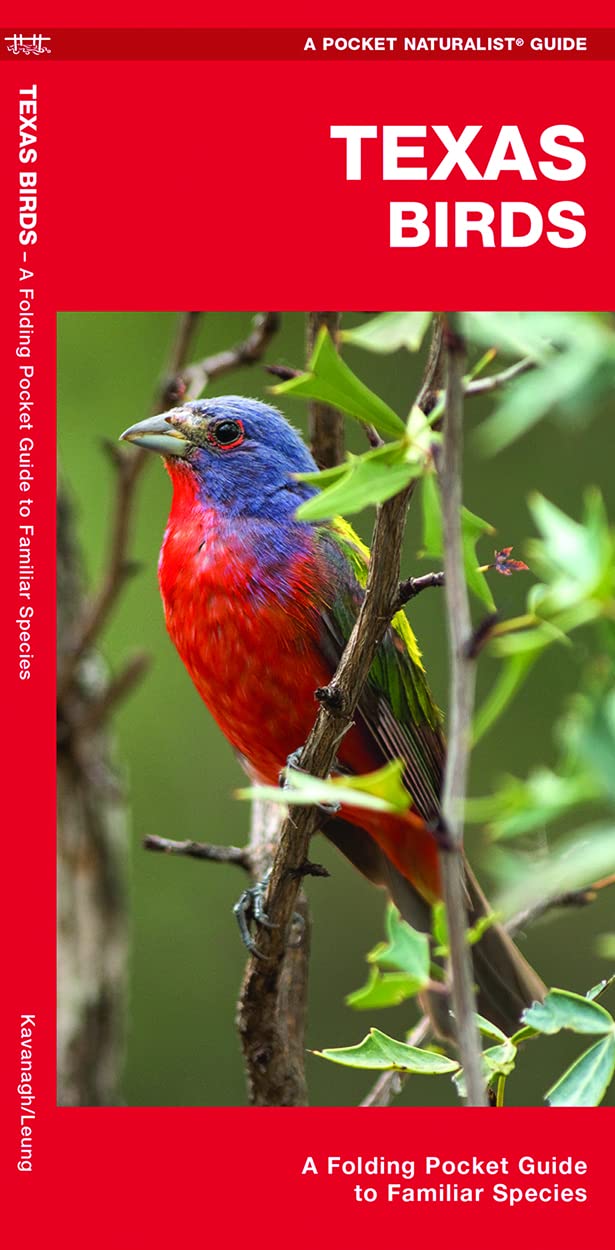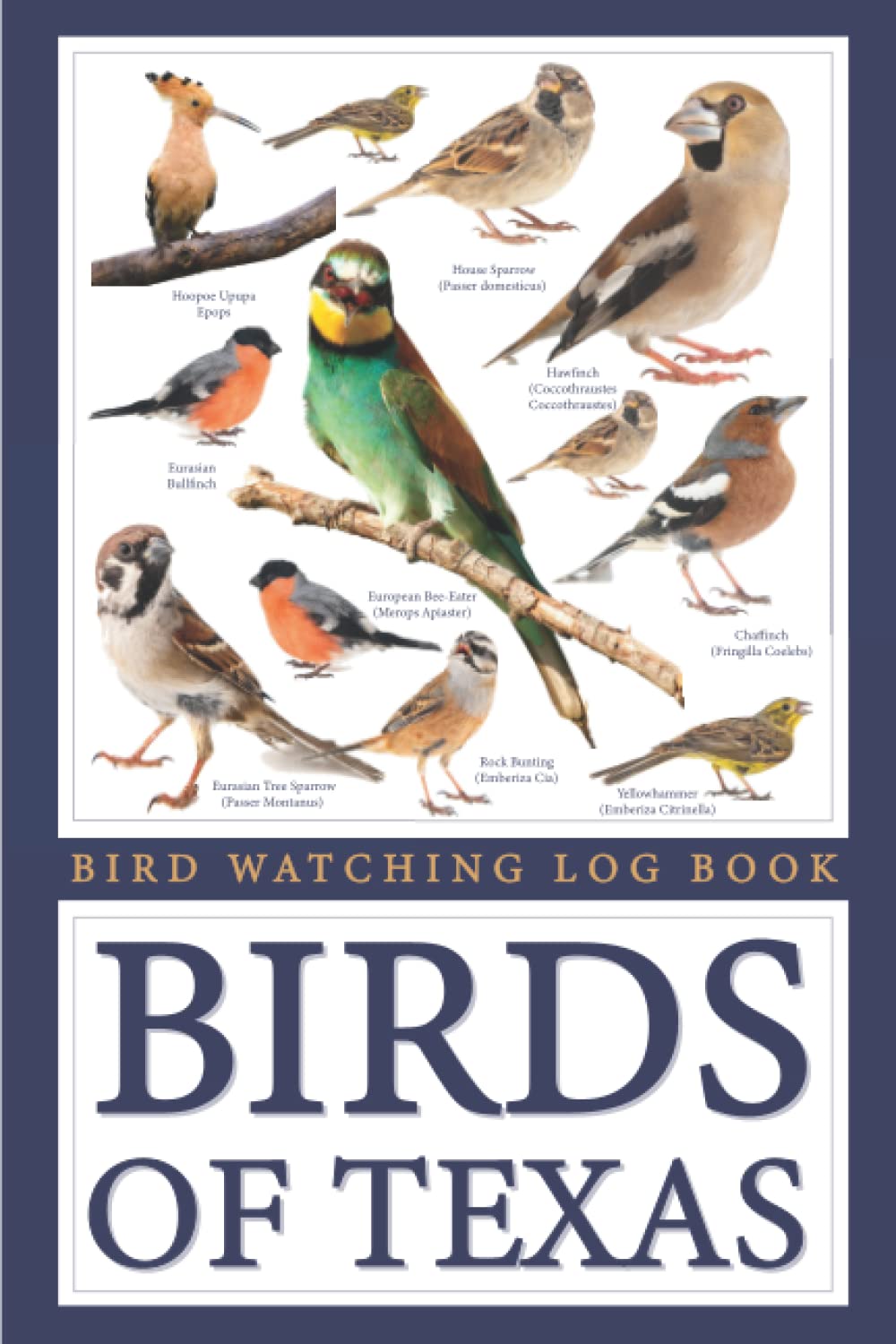Tips for Spotting Local Species

Bird watching is a rewarding hobby that offers the chance to enjoy nature and learn about the diverse avian species that inhabit our skies. In a state like Texas, with its unique ecosystems ranging from coastal marshes to arid deserts and forested hills, the variety of birds to discover is particularly rich. Whether you’re a seasoned birder or a curious newcomer, the right identification tools can significantly enhance the birding experience, allowing enthusiasts to understand and appreciate the subtleties and nuances of the avian world.
For those seeking to identify Texas birds, a comprehensive guide is indispensable. A quality bird identification book or app typically features high-resolution images or illustrations, detailed species descriptions, and information on birds’ behaviors and habitats. This lets birders, at a glance, differentiate between species with similar plumage or recognize birds by their calls and songs—a crucial skill when visibility is limited.
When choosing identification resources, one must consider factors like regional specificity, ease of use, and portability. For quick reference in the field, a lightweight and compact guide might be best, while digital apps offer the additional benefit of audio recordings and interactive features. It’s also critical to select an up-to-date resource, as bird populations and their distribution may change over time.
Our exhaustive research and field tests on numerous bird identification guidebooks and apps geared toward Texas avifauna have yielded insights into those that provide the most reliable, accurate, and user-friendly experience. Moving into discussions of our top picks, birders of all levels will find options tailored to their needs, making the quest to identify Texas birds as enlightening as it is enjoyable.
Top Picks for Texas Bird Identification Guides
We’ve meticulously selected a range of top-quality bird identification guides that are perfect for birding enthusiasts in Texas. Whether you’re just starting out or looking to deepen your ornithological knowledge, our recommended products cover the most comprehensive and user-friendly options available. Let’s help you discover the vibrant world of Texas avifauna with ease.
Texas Bird Guide

Birdwatchers in Texas will find this field guide to be an invaluable companion for identifying local avian species with ease.
Pros
- Comprehensive coverage of Texas bird species
- User-friendly layout for quick reference
- High-quality photographs for precise identification
Cons
- Physical size may not fit all pockets
- Some species might lack extensive detail
- Paper quality might not withstand heavy field use
Exploring the diverse bird habitats across Texas, we found the “Birds of Texas Field Guide” to be a trusty ally. It’s gratifying to recognize the wide array of birds that thrive in the Lone Star State. This guidebook, replete with stellar photos and pragmatic insights, makes birdwatching a breeze, even for the novice.
Its clever organization by color speeds up the identification process. We recently spotted an unfamiliar bird perched near the feeder, and within moments, thanks to the guide’s intuitive layout, its identity was revealed — a Painted Bunting.
However, while roaming the rugged wilderness, we noted that the book’s dimensions, although fairly compact, could sometimes be cumbersome for those who prefer to travel ultra-light. The majority of detailed species profiles indeed inspire confidence, but we occasionally thirsted for more details on certain elusive birds.
Durability sprang to mind during our field trips, as frequent use began to show on the book’s pages. Nonetheless, this minor drawback didn’t overshadow the valuable information within, ensuring our expeditions were filled with learning and discovery.
Texas Bird Pocket Guide

We think this guide is a must-have for anyone interested in quickly and effortlessly identifying Texas birds.
Pros
- Easily portable and well-organized
- Clear and accurate illustrations
- Engaging for kids and beginners
Cons
- Limited to common species
- Not comprehensive for serious birders
- Some may prefer a guide with more detail
Having recently spent a day with the Texas Bird Pocket Guide, we were delighted at its convenience and user-friendliness. Just the right size to slip into a pocket, its foldout design made it easy to flip through while out in the field. The vivid illustrations caught our eye right away, each bird depicted with precision, making identification a breeze even for those less familiar with avian species.
The lightweight nature of this guide added to our enjoyment, not once feeling like a burden to carry. It proved particularly useful during a spontaneous birdwatching opportunity when lugging around a heavy book would have been impractical. Despite its brevity, the guide covers a broad range of species we’re likely to encounter, and it serves as a fantastic starting point for anyone nurturing an interest in birdwatching.
Although we appreciated the straightforward approach to bird identification the guide offered, we did notice its focus on more commonly sighted birds. For those with a deeper interest in ornithology or seasoned birdwatchers aiming for a comprehensive catalog of Texas avifauna, this may not be the definitive resource. However, its simplicity and ease make it an excellent choice for beginners, children, or casual birdwatchers who want a quick reference tool while enjoying the outdoors.
The Texas Bird Pocket Guide encourages exploration and learning, making it a hit with our younger companions. Whether at the park, in the backyard, or during a hike, it’s a resource that invites interaction with nature. Just pull it out, and soon enough you’re identifying the feathered friends around you. However, experienced birders might find themselves desiring more information on habitat, behavior, and calls – details that are beyond the scope of this handy pamphlet.
Texas Birding Log

For avid birdwatchers looking for a dedicated space to document their Texas bird encounters, this journal serves as a practical companion.
Pros
- Ample space for detailed records
- Portable and well-constructed
- Made in the USA
Cons
- Lacks Texas-specific information
- No illustrations or identification help
- Cover may be misleading
Our recent bird watching trip was enhanced by the “Birds Of Texas State – Bird Watching Log Book.” The ability to sketch our sightings and jot down the GPS coordinates in the designated spaces made our observations feel more organized and memorable. Specifically, the quality of the paper allowed us to write smoothly without bleed-through.
When we discussed the journal, its portability came up often. The 6×9 inch size meant it fit comfortably in our bags alongside binoculars and field guides. Its cover, with a matte finish, held up well against the rigors of outdoor use.
However, our group was of the opinion that while the journal is marketed for Texas birdwatching, the content didn’t reflect this. We missed having Texas-specific birds or information that would have enriched our local birdwatching experience. Additionally, some novice birdwatchers expressed a desire for visual aids which this log book doesn’t provide.
In summary, if you’re after a reliable, straightforward journal for your birding adventures and don’t require species-specific features or visual identification resources, this log book can certainly meet your needs.
Texas Birding Guide

If you’re seeking to effortlessly identify the winged visitors in your backyard or during your nature walks in Texas, this guide is a matchless companion.
Pros
- Organized by color, making it swift to navigate
- Contains over 170 species specific to Texas
- Detailed photographs aid in accurate identification
Cons
- Regional focus may exclude migratory birds not common to Texas
- May not be detailed enough for advanced birdwatchers
- Limited to physical copy; lacks digital convenience
Having just referenced the Texas Birding Guide while exploring a local trail, we appreciated its easy-to-use color coding system, especially when a flash of yellow darted past us, and we were able to flip to the yellow section and quickly differentiate between a Common Yellowthroat and a Prothonotary Warbler. The images are crisp, which we’ve found particularly useful for discerning subtle field marks. Insightful details, such as range maps and the “compare” feature, have assisted us in falling into fewer identification traps.
Our journeys through Texas’s varied landscapes often introduce us to an array of bird species. With this guide in hand, we’ve been up to the challenge of distinguishing between the myriad of sparrows that populate our local parks, and it’s become a go-to resource in our birdwatching group.
Despite its impressive breadth, we’ve noted that for the rarities and occasional migrants that pass through Texas, one might need a more comprehensive national guide. For us locals and those new to birding, however, this field guide by Stan Tekiela has proven itself indispensable and engaging, enhancing our birdwatching experiences significantly.
Nat Geo Texas Birds Guide

We believe this guide is a valuable tool for both novice and seasoned birdwatchers in Texas seeking a reliable resource for identifying local feathered friends.
Pros
- Compact design makes it highly portable
- Clear photographs aid in accurate bird identification
- Covers a broad range of Texas bird species
Cons
- Some common birds might be missing
- Photographic depictions can occasionally be unclear
- May not be comprehensive enough for advanced birders
Exploring Texas’s diverse avian population, we’ve come to appreciate the handy size of the Nat Geo Texas Birds Guide. It’s been quite the companion on numerous outdoor excursions, fitting snugly in our bag without adding much weight. Its straightforward layout has allowed us to swiftly flip through pages in search of that elusive bird we’ve spotted perching nearby.
The true-to-life photographs included have given us a clear point of reference for most bird species we’ve encountered. Alongside each image, supportive information has been instrumental in providing not just names but also intriguing facts. Details on habitats, behaviors, and sounds have deepened our understanding and appreciation of the various species that we’ve come across.
Although we’ve successfully used the guide to identify numerous birds, we’ve encountered a few instances where a bird we saw wasn’t listed. At times the photos, while helpful, haven’t always been definitive for making a clear identification in varying lighting conditions. Bird enthusiasts with a specific or advanced focus might find themselves needing a more detail-rich resource. But for us, it has served as a useful introduction to the avian world of Texas.
Buying Guide
When we consider purchasing resources for Texas bird identification, it’s essential to focus on several key features to enhance our birdwatching experience.
Field Guide Features
We look for field guides with clear, high-quality photographs or illustrations, ensuring each bird can be easily identified by its markings and colors. Here’s what’s important:
- Clarity of Images: Images should be crisp and depict birds in various poses.
- Detail: Look for guides with written descriptions that detail bird songs, habitat, behavior, and migratory patterns.
Durability
Since birdwatching often takes us outdoors, we need materials that can withstand the elements:
- Water-Resistant Cover: Protects the guide against weather.
- Sturdy Binding: Ensures pages remain intact after frequent use.
Portability
A guide should be convenient to carry during our field trips:
- Compact Size: It should fit comfortably in a backpack.
- Lightweight: Minimizes fatigue from carrying it around.
Organization
The way a field guide is organized can greatly affect our ability to quickly identify birds:
- Logical Grouping: Birds should be grouped in a way that makes sense, whether by color, size, or habitat.
- Quick Index: A user-friendly index is critical for rapid reference.
Additional Tools
We also consider if additional tools like audio apps or binoculars are suggested to complement the guide. Features should include:
- Interactivity: Apps that offer bird calls are invaluable.
- Quality Optics for Binoculars: Clear magnification ensures accurate bird spotting.
In selecting resources, we ensure that they are not only informative but also easy to use in the field. Our choices cater to both novice and experienced birders, providing a comprehensive aid to bird identification in Texas.


